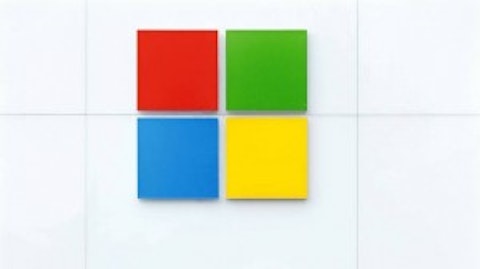
One Microsoft
Microsoft Corporation (NASDAQ:MSFT) states:
“We will create fully integrated experiences across the many screens in our lives, with maximum return to shareholders. All parts of the company will share and contribute to the success of core offerings, like Windows, Windows Phone, Xbox, Surface, Office365, and our EA offer, Bing, Skype, Dynamics, Azure, and our servers.”
The basic rundown of the announcement is that the company will try its best to bring a wholly integrated consumer experience by fully integrating the company to deliver upon the mission of an ecosystem-based strategy. From now on, the company’s product strategy will be built on building the “Microsoft experience” rather than placing emphasis on individual product features.
The Microsoft Corporation (NASDAQ:MSFT) application store will allow for the average user to transition the computing experience across tablet, laptop, desktop, Xbox, and smartphone. This is because the application store will centralize purchases of software and in extension will allow the average user to enjoy the benefits across any and all computing devices.
The effects on the stock price
It’s almost been a week since Microsoft announced its restructuring. The company has been able to drive value to shareholders over the past year by being able to offset the weakness in declining PC shipments with Windows 8 license upgrades, and by building a wholly integrated product system that will be competing with Google Inc (NASDAQ:GOOG)’s Android ecosystem, and Apple Inc. (NASDAQ:AAPL)’s ecosystem.

Microsoft has been able to experience a significant rally. Part of this is driven by favorable market sentiment. The recent One Microsoft Corporation (NASDAQ:MSFT) nnouncement has been able to push the stock above its 52-week high.
The stock should be able to sustain higher rates of growth because of its recent offering of Office 365 onto iOS and Mac OSX. The low-end iPad Mini and Windows RT tablet devices will become entry-level devices in emerging markets.
Most computer users will end up using Office 365, so the company’s monetization strategy for Windows RT and Windows Phone 8 will generally depend on the company’s office suite offering, rather than through hardware-driven revenue. I estimate that Office 365 could contribute an additional $10 billion in net income per year by 2017.
Can it counter Google and Apple?
One of the toughest things about being invested in technology is that the landscape frequently changes. You often see spontaneous growth in product categories that haven’t even existed before. Google Inc (NASDAQ:GOOG) came onto the scene with its Google Android operating system just when the average user was just starting to adopt the smartphone. The unification of major handset manufacturers like Samsung, Sony, LG, HTC, and Motorola brought the Android ecosystem to the hands of hundreds of millions of people. The company has been able to corner 75% of global market share as a result.
One of the biggest shortcomings I see with Google Inc (NASDAQ:GOOG)’s strategy is that it’s heavily dependent on the success of the handset manufacturers within the Android ecosystem. The Android ecosystem is largely about the application store and the fact that it provides standardization for mobile devices regardless of the manufacturer.
The real downside is that Android applications cannot be carried over to Apple Inc. (NASDAQ:AAPL) or Microsoft. In other words. I don’t find much compatibility between my Android smartphone and Windows 7 operating system. That’s the greatest weakness to Android. As a result, Microsoft Corporation (NASDAQ:MSFT) is building up and marketing an ecosystem that Google doesn’t have.





